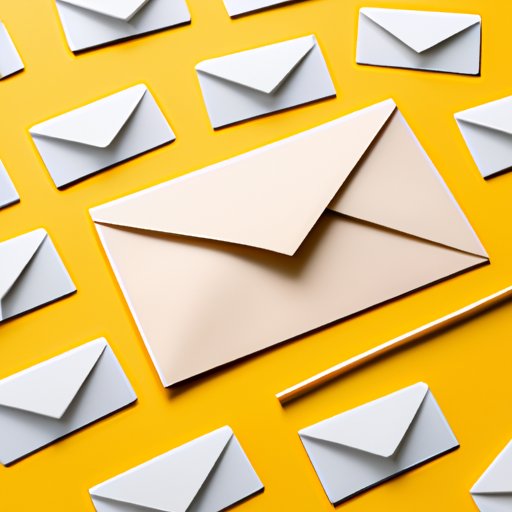
I. Introduction
Whether you’re sending important correspondence, a friendly message, or work-related emails, knowing how to effectively communicate through mail is a valuable skill. This article is a comprehensive guide on how to send a mail, aimed at readers who want to improve their emailing skills or are new to email communication.
II. Focus on the Basics
First things first, let’s go over the basics of what you’ll need and the requirements for sending important correspondence. To send a mail, you’ll need:
– A device with an internet connection
– A valid email address
– A recipient’s email address
– A subject line
– A message
When sending important correspondence, it’s best to follow these guidelines:
– Use a professional email address
– Make sure the email’s content is clear and concise
– Double-check the recipient’s email address and the subject line
– Follow up if necessary
Here’s a step-by-step process of how to send a mail:
1. Open your email platform of choice (e.g. Gmail, Outlook)
2. Click on the “Compose” or “New Message” button
3. Enter the recipient’s email address in the “To” field
4. Enter a brief subject line that summarizes the email’s content
5. Compose your message and ensure that it’s clear and concise
6. Proofread for errors
7. Click send
III. Using Email Platforms
Email platforms have made sending and organizing emails much more convenient. Here’s a comparison of some of the most popular email platforms:
– Gmail: Offers a large amount of storage space, integrates seamlessly with Google services, and has user-friendly features like conversation threads.
– Outlook: Ideal for those who use the Microsoft Office Suite, has a powerful spam filter, and offers great calendar and contact management features.
Regardless of which email platform you choose, here are some tips for managing attachments, organizing drafts, and using templates:
– Attach relevant files and ensure that they’re under the size limit
– Use folders or labels to organize emails into categories
– Save drafts if you need to pause composing an email
– Use email templates if you’re sending similar content repeatedly
IV. A Guide for Beginners
If you’re new to email communication, you may be wondering how to set up an email address. Here are some simple steps to follow:
1. Choose an email platform (such as Gmail or Outlook)
2. Click on “Create an account” or “Sign up”
3. Enter your personal details, including your name and date of birth
4. Choose a unique username and password
5. Verify your email address
6. Explore the email platform’s features and start composing emails
When composing and formatting an email, here are some best practices to follow:
– Keep it concise and to the point
– Use an appropriate font, size, and color
– Use bullet points or numbered lists to organize information
– Proofread your message for any errors or confusing language
Adding an email signature can also make your correspondence look more professional. Here are some things to include in your email signature:
– Your name and title
– Your company’s name and website
– Your contact information, such as your phone number and email address
It’s also possible to send an email to multiple recipients. To do so, follow these steps:
1. Click on the “Compose” or “New Message” button
2. Enter the email addresses of the recipients in the “To” field (separated by commas)
3. Email addresses can also be added in the “CC” field for secondary recipients
4. Compose and send your email
V. Tips for Making Mail Look Professional
In professional settings, communication through mail is taken seriously. Here are some best practices to follow:
– Use a formal tone and appropriate language
– Greet the recipient appropriately (e.g. “Dear [Name]”)
– Use a clear and concise subject line
– Use proper grammar and spelling
– Avoid using abbreviations or slang
VI. Creating a Follow-up Process
Following up on your emails is important for ensuring that the recipient received and understood the email’s content. Here are some strategies for follow-up timing, frequency, and phrasing:
– Wait 2-3 business days before following up
– Use a friendly and polite tone
– Provide a brief summary of the email’s content if necessary
– Ask the recipient if they have any questions or concerns
VII. Conclusion
Knowing how to send a mail is an essential skill for both personal and professional settings. By following these simple guidelines, you’ll communicate effectively and efficiently through email. Remember, the key to successful email communication is clarity, conciseness, and professionalism.




